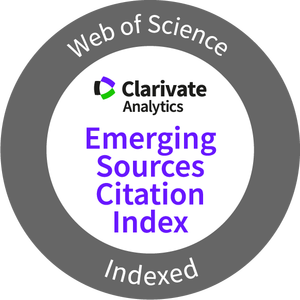The impact of psychological education on the motivation for participating in physical activities among pedagogical students in Vietnam
Resumen
This study investigated the impact of psychological education on enhancing the motivation of pedagogical students to participate in physical activities at three major universities in Hanoi: Hanoi National University of Education (HNUE), Hanoi Metropolitan University (HMU), and National Academy of Education Management (NAEM). The research applied Self-Determination Theory (SDT), emphasizing three fundamental psychological needs—autonomy, competence, and relatedness—to foster intrinsic motivation. Data were collected from 450 students and 30 faculty members using mixed-methods research. The findings revealed significant improvements in students’ intrinsic motivation following the intervention, particularly at HNUE (increasing from 3.9 to 5.4). Amotivation decreased substantially across all institutions, with the largest reduction observed at HNUE (from 2.4 to 1.2). Social support from peers and faculty emerged as a key factor in enhancing intrinsic motivation and reducing amotivation, particularly among female students and first- and second-year cohorts. The study highlights the critical role of psychological education in developing more effective physical education programs. It provides a practical foundation for advancing psychological education interventions to promote sustainable motivation and long-term health benefits for pedagogical students in Vietnam.
Descargas
-
Resumen562
-
PDF 205
Citas
Appleton, J. J., Christenson, S. L., Kim, D., & Reschly, A. (2006). Measuring cognitive and psychological engagement: Validation of the student engagement instrument. Journal of School Psychology, 44, 427–445.
Behzadnia, B., Adachi, P. J., Deci, E. L., & Mohammadzadeh, H. (2018). Associations between students’ perceptions of physical education teachers’ interpersonal styles and students’ wellness, knowledge, performance, and intentions to persist at physical activity: A self-determination theory approach. Psychology of Sport and Exercise, 39, 10–19.
Boiché, J., Sarrazin, P., Grouzet, F., Pelletier, L., & Chanal, J. (2008). Students’ motivational profiles and achievement outcomes in physical education: A self-determination perspective. Journal of Educational Psychology, 100(3), 688–701.
Chatzisarantis, N. L. D., & Hagger, M. S. (2009). Effects of an intervention based on self-determination theory on self-reported leisure-time physical activity participation. Psychology and Health, 24, 29–48. https://doi.org/10.1080/08870440701809533
Deci, E. L., & Ryan, R. M. (1985). Intrinsic motivation and self-determination in human behavior. New York: Plenum Publishing Co.
Deci, E. L., & Ryan, R. M. (2000). The "what" and "why" of goal pursuits: Human needs and the self-determination of behavior. Psychology Inquiry, 11, 227–268.
Duan, Y. P., Wienert, J., Hu, C., Si, G. Y., & Lippke, S. (2017). Web-Based Intervention for Physical Activity and Fruit and Vegetable Intake Among Chinese University Students: A Randomized Controlled Trial. Journal of Medical Internet Research, 19(4), 1-15. https://doi.org/10.2196/jmir.7152
Durau, J., Diehl, S., & Terlutter, R. (2022). Motivate me to exercise with you: The effects of social media fitness influencers on users' intentions to engage in physical activity and the role of user gender. Digital Health, 8, 1-16. https://doi.org/10.1177/20552076221102769
Gallagher, P., Yancy, W. S., Jr, Swartout, K., Denissen, J. J. A., Kühnel, A., & Voils, C. I. (2012). Age and sex differences in prospective effects of health goals and motivations on daily leisure-time physical activity. Preventive Medicine, 55(4), 322–324. https://doi.org/10.1016/j.ypmed.2012.07.017
Ge, Y., Xin, S., Luan, D., Zou, Z., Liu, M., Bai, X., & Gao, Q. (2019). Association of physical activity, sedentary time, and sleep duration on the health-related quality of life of college students in Northeast China. Health and Quality of Life Outcomes, 17(1), 1-8. https://doi.org/10.1186/s12955-019-1194-x
Hagger, M. S., Chatzisarantis, N. L. D., & Barkoukis, V. (2005). Perceived autonomy support in physical education and leisure-time physical activity: A cross-cultural evaluation of the trans-contextual model. Journal of Educational Psychology, 97, 287–301.
Hau, N. H., Cuong, T. V., & Tinh, T. T. (2020). Students and teachers' perspective of the importance of arts in steam education in Vietnam. Journal of Critical Reviews, 7(11), 666–671.
Khanh, M. Q., Tinh, T. T., Kien, P. T., Trung, N. T., & Hung, V. V. (2023). The current state of high school physical education: Exploring socialization and aligning with the 2018 high school education program. International Journal of Membrane Science and Technology, 10(2), 1280–1286.
Kien, P. T., Khanh, M. Q., & Tinh, T. T. (2024). The impact of learning strategies on psychological well-being and academic performance among university students: A case study at Hanoi Metropolitan University, Vietnam. Evolutionary Studies in Imaginative Culture, 8, 242–252.
Ma, C., Zhou, L., Xu, W., Ma, S., & Wang, Y. (2020). Associations of physical activity and screen time with suboptimal health status and sleep quality among Chinese college freshmen: A cross-sectional study. PloS One, 15(9), 1-15. https://doi.org/10.1371/journal.pone.0239429
Ntoumanis N. (2001). A self-determination approach to the understanding of motivation in physical education. The British Journal of Educational Psychology, 71, 225–242. https://doi.org/10.1348/000709901158497
Ntoumanis, N., & Standage, M. (2009). Motivation in physical education classes: A self-determination theory perspective. Theory and Research in Education, 7(2), 194–202.
Oliveira, A. J., Lopes, C. S., Rostila, M., Werneck, G. L., Griep, R. H., Leon, A. C., & Faerstein, E. (2014). Gender differences in social support and leisure-time physical activity. Revista de Saude Publica, 48(4), 602–612. https://doi.org/10.1590/s0034-8910.2014048005183
Reeve, J., Deci, E. L., & Ryan, R. M. (2004). Self-determination theory: A dialectical framework for understanding socio-cultural influences on student motivation. In S. Van Etten & M. Pressley (Eds.), Big theories revisited (pp. 31–60). Greenwich, CT: Information Age Press.
Ryan, R. M., & Deci, E. L. (2000). Intrinsic and extrinsic motivations: Classic definitions and new directions. Contemporary Educational Psychology, 25(1), 54–67.
Taylor, I., Ntoumanis, N., & Smith, B. (2009). The social context as a determinant of teacher motivational strategies in physical education. Psychology of Sport and Exercise, 10, 235–243.
Vallerand, R. J., Pelletier, L. G., & Blais, M. R. (1992). The academic motivation scale: A measure of intrinsic, extrinsic, and amotivation. Educational and Psychological Measurement, 52, 1003–1017.
Wang, L. J., & Chen, R. Z. (2022). Psychological needs satisfaction, self-determined motivation, and physical activity of students in physical education: Comparison across gender and school levels. European Journal of Sport Science, 22(10), 1577–1585.
Las obras que se publican en esta revista están sujetas a los siguientes términos:
1. El Servicio de Publicaciones de la Universidad de Murcia (la editorial) conserva los derechos patrimoniales (copyright) de las obras publicadas, y favorece y permite la reutilización de las mismas bajo la licencia de uso indicada en el punto 2.
© Servicio de Publicaciones, Universidad de Murcia, 2013
2. Las obras se publican en la edición electrónica de la revista bajo una licencia Creative Commons Reconocimiento-NoComercial-SinObraDerivada 3.0 España (texto legal). Se pueden copiar, usar, difundir, transmitir y exponer públicamente, siempre que: i) se cite la autoría y la fuente original de su publicación (revista, editorial y URL de la obra); ii) no se usen para fines comerciales; iii) se mencione la existencia y especificaciones de esta licencia de uso.
3. Condiciones de auto-archivo. Se permite y se anima a los autores a difundir electrónicamente las versiones pre-print (versión antes de ser evaluada) y/o post-print (versión evaluada y aceptada para su publicación) de sus obras antes de su publicación, ya que favorece su circulación y difusión más temprana y con ello un posible aumento en su citación y alcance entre la comunidad académica.



















